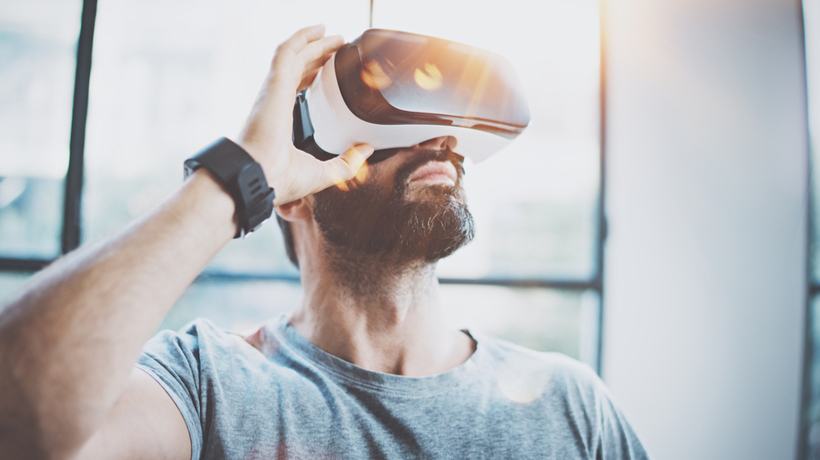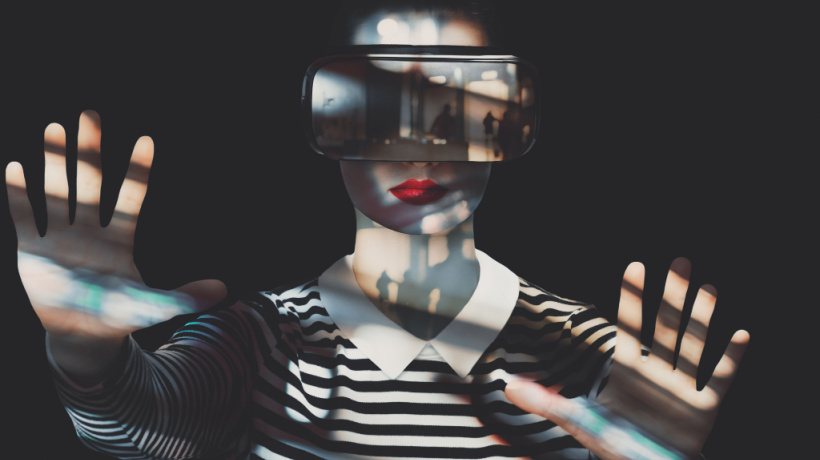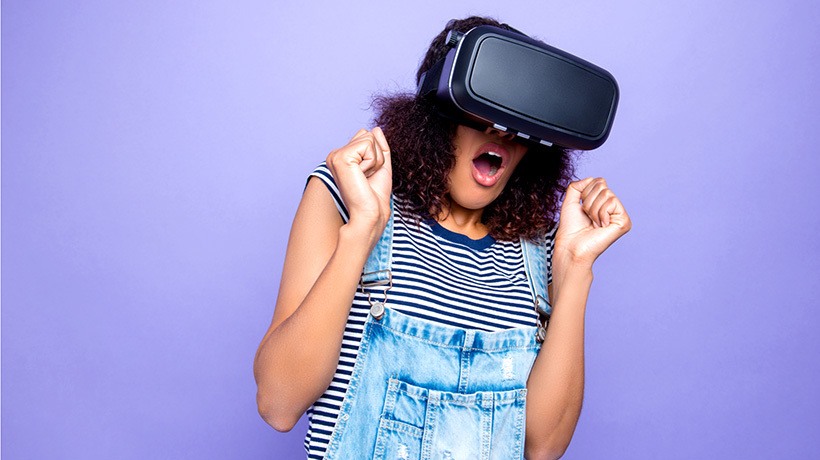Famous Virtual Reality Myths Debunked
With Virtual Reality, people can look around and interact in a surrounding made of realistic images, sounds, and other sensations that simulate a user's physical presence in a virtual or imaginary environment.
1. Virtual Reality Is Just A Trend
As soon as people knew how to capture the world, they tried to create such an immersive experience. It's a small step from cave paintings to the Panorama Mesdag, in the 1880s, which is a cylindrical painting more than 14 meters high and about 40 meters in diameter, therefore 120 meters in circumference. This Cyclorama creates the illusion that the viewer is on a high sand dune overlooking the sea, beaches, and village of Scheveningen in the late 19th century. Around that same time, stereoscopic photography turned pictures into 3D experiences which spread the world with the famous View-Master.
Almost thirty years ago, in the 1990s, we saw the first widespread commercial releases of consumer headsets. In 1991, Sega announced the Sega Virtual Reality headset for arcade games and the Mega Drive console. It used LCD screens in the visor, stereo headphones, and inertial sensors that allowed the system to track and react to the movements of the user's head. In 1994, Apple introduced Quicktime Virtual Reality to view 360 panoramic pictures and in 1995 the Virtual Boy by Nintendo set footsteps on earth. Although Virtual Reality instantly became a new horizon for training and therapy, the lack of computing power killed this first wave, leaving expensive headsets, suits and research behind.
In the 90s, a lot of research has been done about the effects of Virtual Reality training and therapy. And most conclusions are that Virtual Reality is a great solution to train stressful, harmful, and inaccessible situations. As we, e.g. our brain, think we are a presence in a virtual world, Virtual Reality offers new possibilities in training and development.
2. Virtual Reality Is Expensive
Facebook bought Oculus Rift in March of 2014 with an astonishing amount of 2 billion dollars, leaving Google with empty hands. But Google hit back in June of 2014 with the affordable and accessible Google Cardboard. This Google Cardboard is a head mount for a smartphone, that allows users to experience Virtual Reality. High-end Virtual Reality sets like the Oculus Rift and its competitors, Sony PlayStation VR or HTC Vive, set the standards of interactive, real-time rendered virtual surroundings. The Google Cardboard and plastic derivatives made Virtual Reality accessible for everyone.
As the high-end headsets also need a kickass computer or a PlayStation, you can say that entering interactive imaginary worlds costs you a lot. If you want to train astronauts, that's no problem at all and you can add some Manus-Virtual Reality gloves as well. On the other hand, if you just want to give an interactive tour of the available safety equipment, a Cardboard viewer and the trainee's smartphone will do just fine.
It's about what kind of Virtual Reality experience you need to reach your training goals. It's not about the hardware. It's about the content.
3. Virtual Reality Content Is Hard To Make
The best VR games are made by a big team of sound/movement/skin artists and high-skilled game developers and even bigger 7 figures budgets. You can enter a VR game and be overwhelmed in an imaginary world like Eagle Flight:
Eagle FlightCreating an imaginary world ain’t a piece of cake. It took an artist a month to create a virtual Breughel world with only static views:
Flemish Proverbs & The Children's Games (By Studio Sjoucke)
Rendered Virtual Reality can be great to show a new building. And most of the architects already use 3D CAD software; it’s a small step to create a Virtual Reality tour:
Step a bit further (By Enversed)
Be aware if you want to add interaction and movement to such a model, you step into the Virtual Reality game category and have a choice between, simplistic and affordable or amazing and expensive.
Most of the time, the location exists and the situation can be played. But then, training sessions on location can be costly and its hard to measure the effect. Personnel has to travel, resources have to be allocated for practice and guided tours. Virtual Reality is an engaging and consistent way of training. The trainee can virtual visit a location, anytime they want, or practice a situation under varying circumstances, from a safe environment.
And the trick is, you only need a 360o camera to capture a situation or procedure. Stick to 360o photos if you want to learn the way, show safety equipment or review a situation. As you can look around, there’s enough time to learn about your surroundings. Add hotspots to wander around and explore a factory, building, installation and so on. Add sound to enrich the experience. And the best part her is, great 360o cameras with high resolutions start from a relatively low price, like the Ricoh Theta V.
When you want to introduce procedures, explain proceedings or change a person's point of view; 360o video can truly be of great help. A Virtual Reality video enlarges the sense of presence and makes you walk along a technician, surgeon, or you name it, to learn from it. You only have to create a 360 instruction video once and you can train in a consistent way, over and over again.
Add hotspots for questions and checklists. Change height, to create an ant view perspective or become a giant. Be careful with moving the camera around, as these are the viewer’s eyes. Avoid sudden movements and high speeds, as these can cause motion sickness. Virtual Reality can be as expensive as buying a car. Any car will bring you from A to B. The way you drive depends on many things and budget, first of all.
4. Virtual Reality Causes Dizziness
When we jump for a while on a trampoline and then step on the ground, it feels extremely solid. Our mind adapts to a new jumping reality in a sec. With Virtual Reality, the user gets a sense of presence in a digital world. And your brain adapts to its new artificial surrounding on the spot. So people react when virtual limbs are touched. People get scared of virtual heights and take a step back. People lose balance, riding a virtual rollercoaster.
As with seasickness, your equilibrium bodies detect movement and your eyes can’t see it. Virtual Reality can cause motion sickness, as your eyes perceive motion and your body doesn't. You don’t have any reference points, so some discomfort is lurking, especially, when there are rotational movements. Research shows that a virtual nose, projected in the corner, could alter the motion sickness.
Plus you can’t focus in Virtual Reality, at least not yet, so the visual info can’t be filtered and that gives a highly intense exposure. Video footage and animations could really sweep someone off his feet. That’s why it’s important to let the user be in control. People should be able to stop or leave the virtual world whenever they like. Be sure that the people can navigate, so they can enter a situation at their own pace.
It’s important to make the use of Virtual Reality as comfortable as possible and get people used to an immersive experience step by step. Start a first session on a static chair and take a next step seated on a swivel chair. Walking around in Virtual Reality is only available with an high-end HTC Vive and, of course, always make sure that you step into Virtual Reality from a safe surrounding.
Virtual Reality Is Like A Training Espresso
Virtual Reality is an intense way of learning, with maximum attention and high retention, due to an active way of learnin. Short sessions are enough to boost your training program. Virtual Reality is great if you want to take people to a specific situation, just from the comfort of your classroom. Virtual Reality is not a one-size-fits-all solution, but it surely is an engaging way of training if you set the right learning objective.








